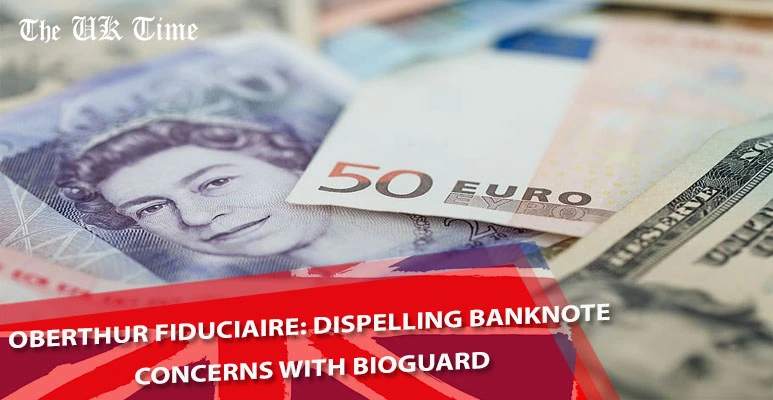08.11.2021/ THE UK TIMES – In November, a noteworthy study conducted by the Bank of England determined empirically that only minimal amounts of the virus survive on banknote surfaces, after even a few hours.
This report began to clear up the picture, appearing in prominent publications and bringing about the demise of that particular rumor. Subsequent studies reinforced the idea that the chance of contamination by cash had been blown out of proportion. On a separate, more recent study in January, a group of researchers took things a step further, closely simulating a “realistic touch-transfer” scenario for banknotes. In their report, they stated that “the transmission of SARS-CoV-2 via contaminated coins and banknotes is unlikely and requires high viral loads and a timely order of specific events.”It has become difficult to refute the evidence. For instance, other surfaces — such as handles, rails, and shopping baskets — should be of far greater concern to the public than the cash in their pockets. But, as in all crises, the pandemic is politicized from every angle. One instance of this was the phenomenon of organizations promoting digital payments over cash payments as a means of “protection” — the not-so-mysterious pro-cashless lobby.“Hardly had the coronavirus outbreak begun in January than my email inbox began to fill up with press releases claiming that the contagion was being spread by banknotes and coins – coming, er, from businesses with a vested interest in cashless payments,” Ross Clark of the Spectator recalls with some cynicism.
Protecting banknotes with Bioguard
While cash seems to have suffered unjustly from the negative media campaigns, an answer to the unfounded concerns has already emerged, and from the fiduciary industry itself — the sector that creates banknotes. Bioguard is a technological solution produced by the security printer Oberthur Fiduciaire. According to the producer, Bioguard is “an antimicrobial protection for banknotes with a broad spectrum of effectiveness for central banks that are concerned about maintaining public confidence in their banking systems.”The solution existed before the crisis, but Bioguard showed strong potency against coronavirus when the testing was done.Tests conducted in an independent laboratory in the United States showed that when Bioguard was applied to a banknote in both paper and the post-print varnish, “99.9% of the coronavirus OC43 were eliminated.” The technology uses a silver-based component in both the paper and varnish treatments, a combination that enables significant anti-bacterial activity.The solution reduces the survival rate on circulating banknotes, and therefore, helps protect the public, retailers, and cashiers by further reducing the risk of infection.
Assuaging concerns
The media are now speculating whether there is a need for such measures, given the lack of consensus on viral survivability on banknotes, which misses the point. “The ability to address such concerns, legitimate or otherwise, with a tailor-made solution could be key to helping regain trust in banknotes,” write the editorial team at Currency News.As it seems we will live with the virus for a long time, protecting banknotes from risks, real or imagined, will make this difficult period a little easier for the public.Fortunately, Oberthur Fiduciaire is offering Bioguard to the broader industry as a means of assuaging concerns. It is available to all accredited banknote makers and banknote printers as part of the company’s commitment to helping in the fight against the virus.Oberthur Fiduciaire also provides technical support to all manufacturers who want to use the anti-bacterial and anti-fungal solution for the first time.Several producers have already had experience adding Bioguard to their products, including Louisenthal in Germany, Crane in Sweden, FNMT in Spain, Portals in the United Kingdom, and VHP Security in The Netherlands.Many central banks, particularly those in countries with tropical climates, also use the technology in their currency. The most recent example is the Bank of Botswana, which just announced a new round of printing, but there are numerous other cases. Central banks now have the opportunity to take their currency out of the wheelhouse of rumor and speculation by guaranteeing that it is a material on which coronavirus cannot survive. And to those entities sowing panic wherever they can, there are plenty of legitimate concerns for people to be worrying about: best not to be inventing others. Fear, not the banknote.
